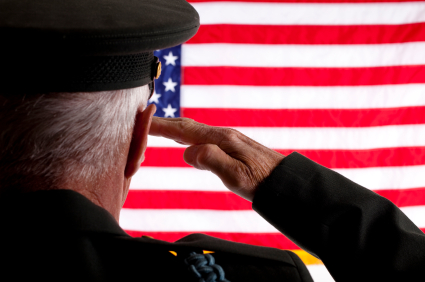What Are Aid and Attendance Benefits?

Aid and Attendance is a benefit paid by Veterans Affairs (VA) to veterans, veteran spouses or surviving spouses. It is paid in addition to a veteran’s basic pension. Aid and Attendance is for applicants who need financial help for in home care, to pay for an assisted living facility or a nursing home. It is a non-service-connected disability benefit, meaning the disability does not have to be a result of service. Aid and Attendance benefits are paid to those applicants who:
-
- Meet service requirements
- Meet certain disability requirements
- Meet income and asset limitations
What are the Service Requirements for Aid and Attendance?
A veteran or the veteran’s surviving spouse may be eligible if the veteran:
-
- Was discharged from a branch of the United States Armed Forces under conditions that were not dishonorable AND served at least one day (did not have to be served in combat) during the following wartime periods and had 90 days of continuous military service:
- World War I: April 6, 1917, through November 11, 1918
- World War II: December 7, 1941, through December 31, 1946
- Korean War: June 27, 1950, through January 31, 1955
- Vietnam War: August 5, 1964 (February 28, 1961, for veterans who served “in country” before August 5, 1964), through May 7, 1975
- Persian Gulf War: August 2, 1990, through a date to be set by Presidential Proclamation or Law.
If the veteran entered active duty after September 7, 1980, generally he/she must have served at least 24 months of the full period for which called or ordered to active duty (there are no exceptions to this rule).
What are the Disability Requirements for Aid and Attendance?
Veterans, spouses of veterans or surviving spouses can be eligible for Aid and Attendance benefits if they meet the following disability requirements:
The aid of another person is needed in order to perform personal functions required in everyday living, such as bathing, feeding, dressing, toileting, adjusting prosthetic devices, or protecting himself/herself from the hazards of his/her daily environment; or
-
- The claimant is bedridden, in that his/her disability or disabilities require that he/she remain in bed apart from any prescribed course of convalescence or treatment; or
- The claimant is in a nursing home due to mental or physical incapacity; or
- The claimant is blind, or so nearly blind as to have corrected visual acuity of 5/200 or less, in both eyes, and/or concentric contraction of the visual field to 5 degrees or less.
What are the Income Requirements for Aid and Attendance in 2022?
The claimant’s countable family assets and income must be below a yearly limit set by law.
The yearly limit for the year 2022 is $138,489.
The maximum Aid and Attendance benefit that can be paid monthly to a veteran or their spouse (subject to yearly changes) are listed below; but the veteran or their spouse must have a countable income of $0 to receive the maximum benefit. To find out more about what is considered “countable income”, call your local VA Office.
-
- Maximum amount to veteran – $2,050/month
- Maximum amount to spouse – $1,318/month
- Maximum amount for couple – $2,431/month
How do You Apply for Veterans Affairs Benefits?
Applying for VA pension is often complicated and may take some time. It is a good idea to keep copies of all un-reimbursed medical bills for at least twelve months. The average wait for approval is six to eight months or so. However, the benefits are retroactive to the date of application.
There are several ways you can apply for non-service-connected pensions:
1. You can contact your LOCAL VA office, or
2. You can contact a local Veterans Service Office (VSO) organization in your county.